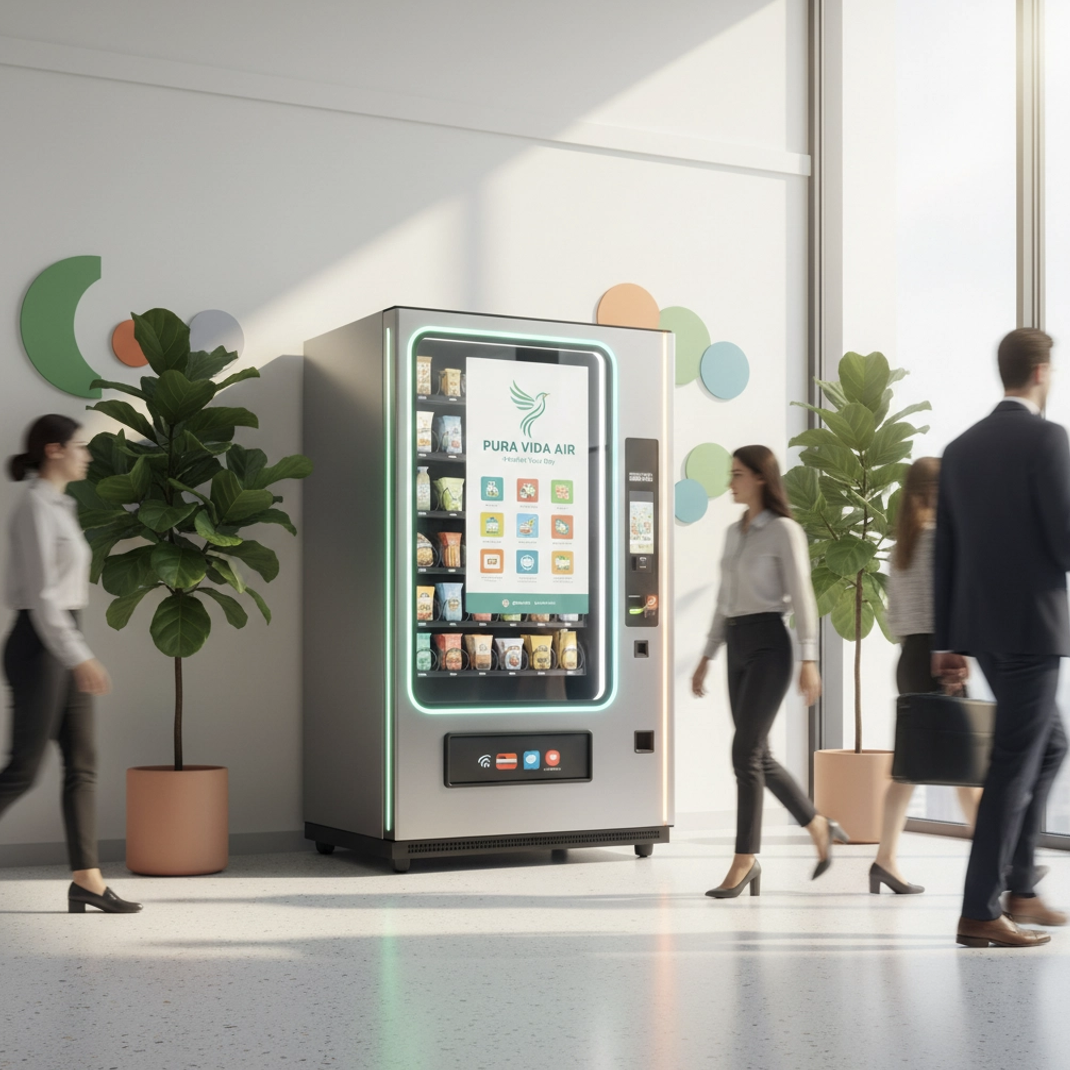Dialing In the Perfect Vending Mix: Why Rotation (and Rhythm) Matters
Here's a truth bomb that every seasoned vending operator knows but newbies learn the hard way: your vending machine isn't a one-size-fits-all snack dispenser.
It's more like a chameleon that needs to adapt to its environment, or it'll starve to death (metaphorically speaking, of course).
Picture this: You've got the same exact machine stocked with identical products sitting in a CrossFit gym and a law office. Guess what? The lawyer who just pulled an all-nighter prepping for court isn't reaching for the same fuel as the fitness enthusiast who just deadlifted their body weight. The gym rat wants that energy drink and maybe some protein bars, while the attorney is probably eyeing the dark chocolate and desperately needs caffeine that doesn't come with 200mg of taurine.
This, my friends, is where the magic of product rotation and finding your rhythm comes into play.
Know Your Audience (Like, Really Know Them)
Every location tells a story, and your job is to become a detective. That tiny fitness studio you peeked into? It might actually be a sprawling rehabilitation center with physical therapists, patients recovering from injuries, and family members spending long hours in waiting rooms. Each of these groups has different snacking needs and purchasing power.
The key is observation mixed with a healthy dose of experimentation. You're not just stocking a machine; you're curating an experience that matches your customers' daily rhythms, stress levels, and taste preferences.
The Healthcare Heroes at that rehab center might grab energy bars between patient sessions, while The Worried Families in the waiting area lean toward comfort foods – think chocolate, cookies, or familiar brand names that provide a small moment of normalcy during stressful times.
The Art of the Initial Setup
When you're first setting up a location, think of yourself as a DJ reading the room. You want to start with a solid baseline mix that covers the essentials, then watch how the crowd responds. Here's your opening act playlist:
Energy & Focus (25-30% of your machine):
Energy drinks for the go-getters
Coffee beverages for the caffeine dependent
Nuts and trail mixes for sustained energy
Sweet Relief (30-35%):
Chocolate bars (because chocolate is basically a food group)
Cookies and pastries for comfort seekers
Candy for quick sugar fixes
Savory Solutions (20-25%):
Chips and crackers for the salt cravers
Healthier options like baked chips or veggie straws
Mixed nuts for the health-conscious
Wild Cards (15-20%):
Seasonal items
Local favorites
Trendy or unique products that spark curiosity
But here's where it gets interesting, this is just your opening number. The real show starts when you begin rotating and reading the sales data.
Finding Your Rotation Rhythm
Patience, grasshopper. Rome wasn't built in a day, and your perfect product mix won't reveal itself overnight. Most successful vendors establish a 2-3 week rotation cycle during the initial setup phase. This gives you enough data to spot patterns without changing things so frequently that customers get whiplash.
Think of it like dating, you need enough time to really get to know each other before making any big decisions. Rush the process, and you'll miss those subtle clues about what your customers really want.
Finding Your Rotation Rhythm
Patience, grasshopper. Rome wasn't built in a day, and your perfect product mix won't reveal itself overnight. Most successful vendors establish a 2-3 week rotation cycle during the initial setup phase. This gives you enough data to spot patterns without changing things so frequently that customers get whiplash.
Think of it like dating, you need enough time to really get to know each other before making any big decisions. Rush the process, and you'll miss those subtle clues about what your customers really want.
Week 1-2: Observe and take notes (seriously, write this stuff down)
Which slots empty fastest?
What time of day do people buy certain items?
Are there products that just sit there looking lonely?
Week 3-4: Make your first strategic swaps
Replace slow movers with similar alternatives
Test different brands of popular categories
Try shifting placement (eye-level is prime real estate!)
Week 5-6: Fine-tune based on new data
Double down on winners
Experiment with price points
Consider seasonal or special occasion items
The Inventory Reality Check
Let's talk about the elephant in the room: your current inventory situation. You can't rotate products you don't have, and you can't afford to buy every possible option just to test market demand. This is where being strategic becomes crucial.
Smart operators work with their suppliers to arrange small-batch testing agreements. Maybe you can get a sleeve of a new energy drink to test, or sample sizes of premium chocolates. The goal is to test market response without committing to cases of products that might become expensive shelf-sitters.
Pro tip: Keep a "rotation ready" inventory of 3-5 alternative products for each category. When something isn't performing, you've got backup dancers ready to step onto the stage.
Reading the Room (and the Sales Reports)
Your vending machine is constantly whispering secrets about your customers, but you have to listen. Those sales reports aren't just numbers, they're customer preference love letters written in dollar signs.
Morning Rush Patterns: If energy drinks and coffee are flying off the shelves between 7-10 AM, you've got a crowd that needs fuel to start their day. Consider adding more caffeinated options during restocks.
Afternoon Slump Solutions: The 2-4 PM timeframe often reveals stress eating patterns. Chocolate sales spike, comfort foods move faster, and people reach for familiar brands that feel like warm hugs.
End-of-Day Exhaustion: Late afternoon and evening purchases often lean toward either "I need energy to finish this day" (energy drinks, coffee) or "I deserve a treat after surviving today" (premium snacks, indulgent chocolates).
The Sweet Spot of Selection
Here's where patience pays off big time. After 6-8 weeks of thoughtful rotation and data collection, patterns emerge like magic. You start seeing the personality of your location, and it's beautiful.
Maybe your office building loves those fancy European chocolates but turns their nose up at basic candy bars. Perhaps your gym customers go crazy for plant-based protein options but ignore traditional chips completely. This is your golden ticket information.
The most successful vending operators resist the urge to please everyone. Instead, they focus on absolutely nailing the preferences of their core customer base. It's better to be the go-to source for exactly what 80% of your customers want than to be mediocre for 100% of potential customers.






























